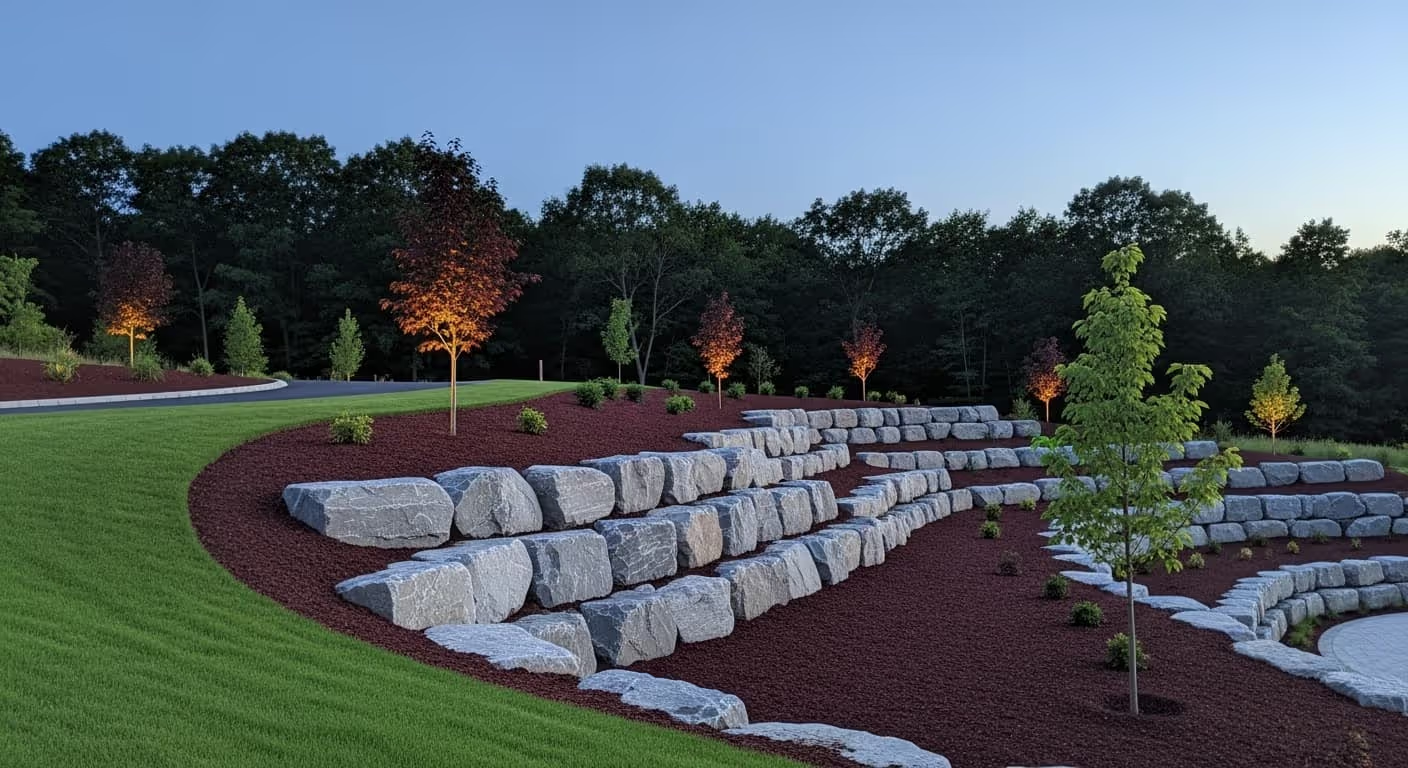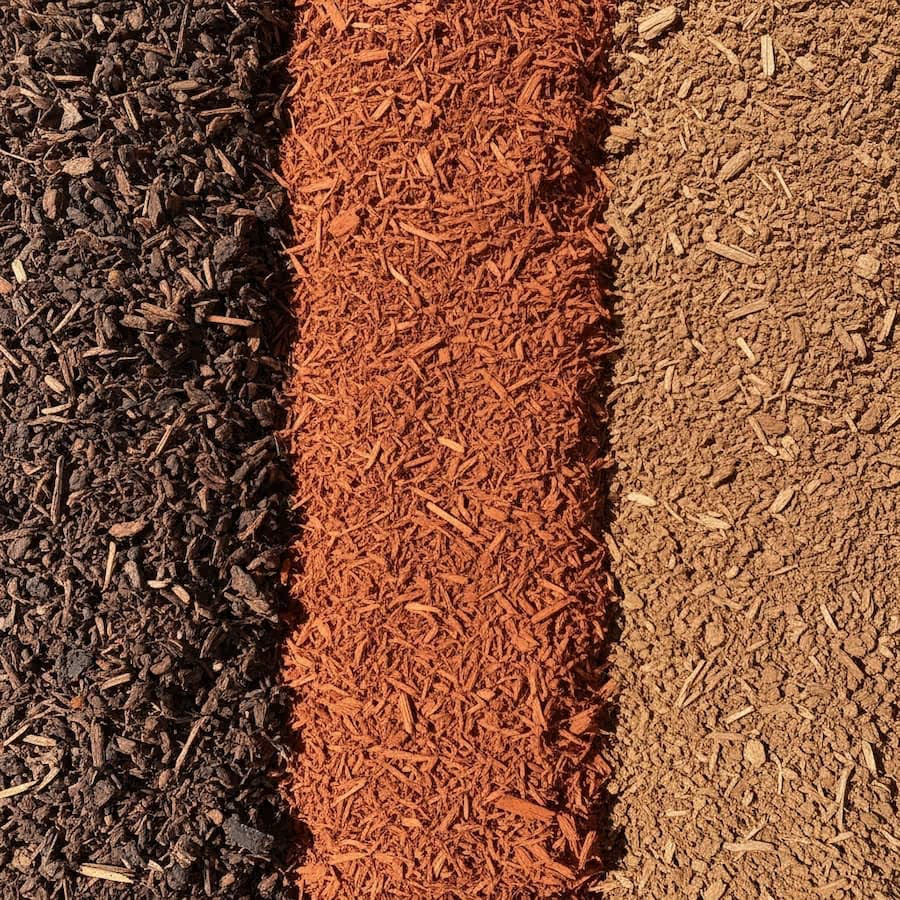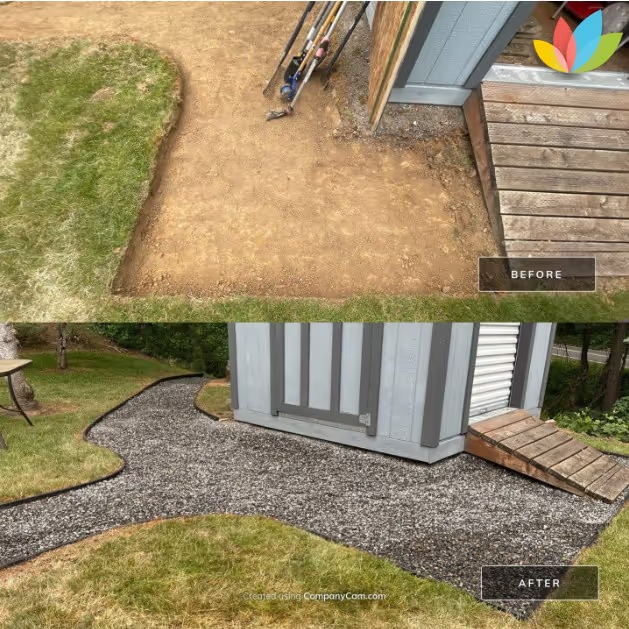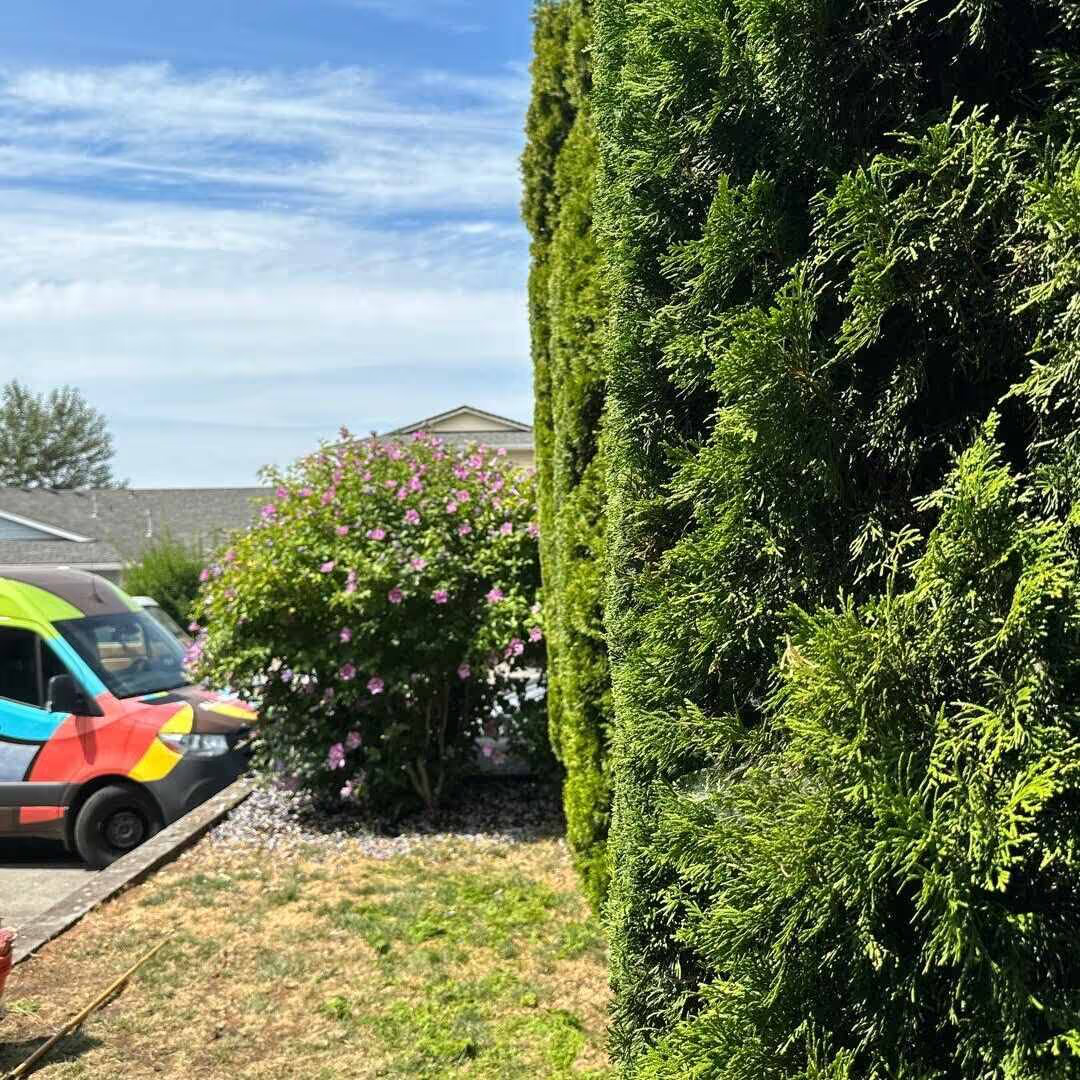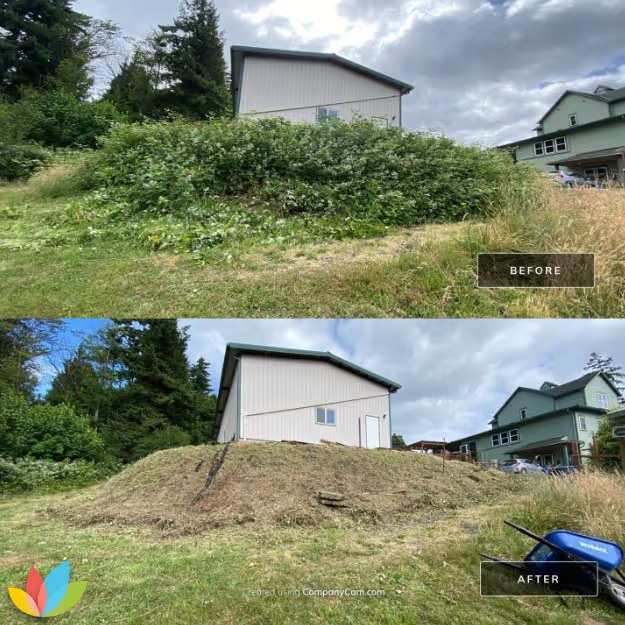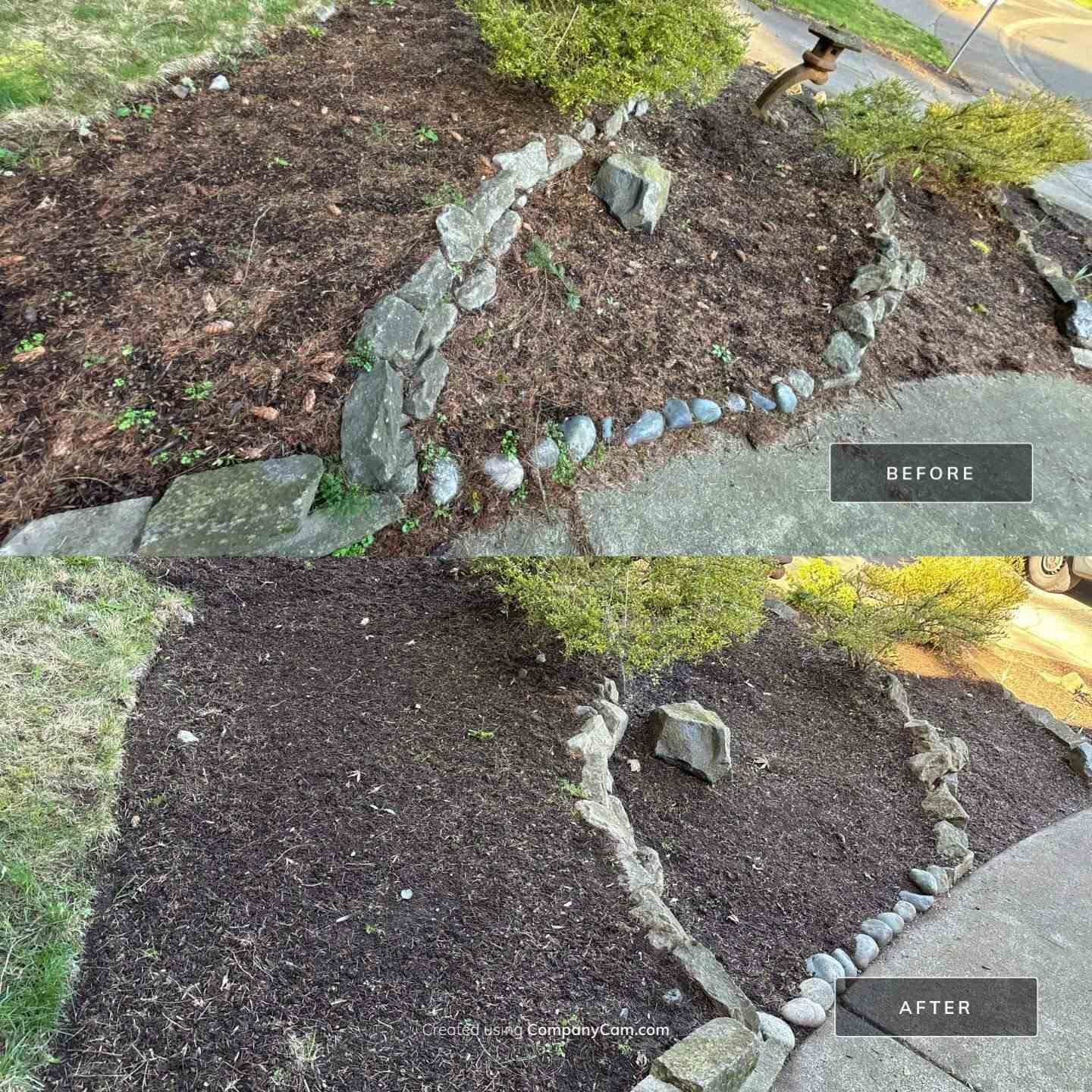Mulch Installation: Boost Your Landscape’s Health and Curb Appeal
Installing mulch is one of the easiest and most effective ways to improve your yard. It provides a clean, finished look while offering real benefits:
- Helps soil retain moisture
- Regulates temperature around plant roots
- Prevents weed growth
- Protects soil from erosion and compaction
Whether you're landscaping for looks or plant health, mulch is essential.
Popular Types of Mulch
Choosing the right mulch depends on your landscape’s needs and your style:
- Shredded Bark Mulch - Long-lasting, natural look, breaks down slowly
- Dyed Mulch (Black, Brown, Red) - Colorfast options for visual impact around patios or walkways
- Natural Wood Chips - Organic and great for enriching soil over time
- Composted Bark - Nutrient-rich and ideal for flower or veggie beds
- Rubber Mulch - Durable and low-maintenance, often used in playgrounds or high-traffic areas
Weed Barrier: Fabric or No Fabric?
Here’s what to consider before using landscape fabric:
- When to Use Fabric:
- For decorative beds with minimal planting
- To reduce weed growth in rock or bark installations
- When to Skip It:
- In garden beds with annuals or perennials (fabric can block water and root growth)
- If you want to improve soil health over time
Tip: Use breathable fabric only never plastic sheeting, which suffocates soil and traps water.
When Should Mulch Be Replaced?
Keep mulch fresh and functional with routine maintenance:
- Reapply or top off mulch every 1–2 years
- Maintain a depth of 2–3 inches for best results
- Replace when mulch fades, thins out, or becomes patchy
- Avoid piling mulch directly against tree trunks or plant stems
Too much mulch can attract pests or cause rot, balance is key.
Why Mulch Matters
A well-mulched yard:
- Looks neat and well-kept
- Requires less watering and weeding
- Supports stronger, healthier plants
Whether prepping for a new season or tackling problem areas, fresh mulch is a smart, affordable upgrade to maintain your landscape.

